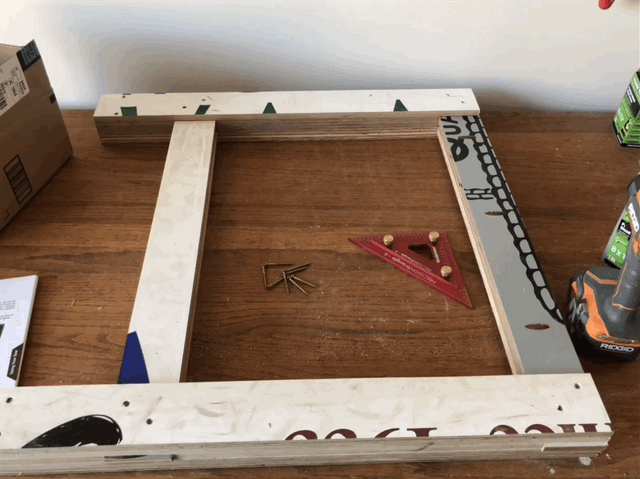Baseball Signage Shop Carts
Inspiration:
Prior to the start of the little league baseball season our league changed out the outfield sponsor signage and put out a call to try to reuse/recycle the large plywood signs. We picked up a bunch of them and stored them on the side of the shop until inspiration hit. I needed some shop carts/tool stands to put my small bench top power tools on as we were previously using and old folding table. I watched several videos from multiple different makers who had several awesome features to include flipping tops and carts that could be used as outfield tables and fit together to create larger assembly tables (like a Transformer). These were incredible but a little too involved for what I was shooting for. I had followed plans from Fine Woodworking to make my main work bench and decided to adapt the same construction techniques for these carts. I also added locking casters to allow me to move them around the shop or outside if I needed more space.
Inspiration videos:
Supplies:
1/2 inch plywood (or little league signage if you got it!)
Cut List:
Stretcher length 28 1/8” x 4
Stretcher shoulder 22” x 8
Legs 28 1/2” x 16
Bottom shoulder 6” x 4
Middle shoulder 16 1/2” x 4
Tops 21” X35 3/5” x2
Sides 21”x16 1/2” x2
Construction:
These carts are super sturdy and probably way over engineered for what I am using them for. The casters make it easy to move them outside the shop if I need more room to handle larger stock without having to spend a lot of time or effort. The construction is basic mortise and tenon which are made by gluing and screwing the differing lengths of plywood strips together. The legs are 5 layers thick while the stretchers are 3. I started by ripping all my stock piece to 3/8’ of the final dimensions out of my outfield signage 1/4 inch panels. I then spread a thin layer of glue on each leg and glued 2 pieces together so I had a total of 8 double thick leg pieces. I held the legs together with pin nails while the glued dried and as I was making five carts at once I also let gravity give an assist by stacking them on top of each other. If you do end up scoring some signs like I did, be sure to only use a thin layer as the vinyl wraps inhibit the glue drying and typically are really smooth so you will get a lot of squeeze out as you laminate your pieces. I also glued and nailed up my stretchers sandwiching one longer piece in the middle of two short pieces to make my tenons. Then I cut my side panels and top panels to their final dimensions. I laminated my top pieces together with a thin layer of glue and pin nails. Once my legs dried (I waited a week as 5 carts at once made a lot of squeeze out!) I used an off cut from my stretchers to use as a spacer while I laminated my legs using the 6” piece to create the bottom part of the lower mortise then a spacer then the 16 1/2” piece form the upper mortise. I glued and screwed these pieces together with wood screws being careful to only use a thin layer of well spread glue on each surface, then removed my spacer block from the lower mortise. Repeat three more times. After allowing 48 hours to dry I squared up the bottoms of the legs on my jointer the trimmed the leg units to their final dimensions. Another word of caution for SawStop users: If your glue has not dried fully it will trip your blade break! Let it cure fully or you’ll be replacing your blade and break which can get expensive quick! I also trimmed up the aprons to their final dimensions and drilled pocket holes along the face of the upper stretchers. Next I placed the side panel on the inside of two leges between the top of the lower mortis and the bottom of the top mortise and repeated the step for the other side. Finally I placed the upper and lower stretchers into one set of legs and glued and screwed it together followed by the other side assembly. An extra set of hands is useful for this step even if they belong to your 10 yo son! Finally I inverted the table and used the pocket holes I drilled into the apron to attached the top. The casters were attached as the final step prior to turning the cart upright. I used 1 3/4 screws to reinforce the upper shoulders where the top stretcher comes in and where the wheels are attached.





